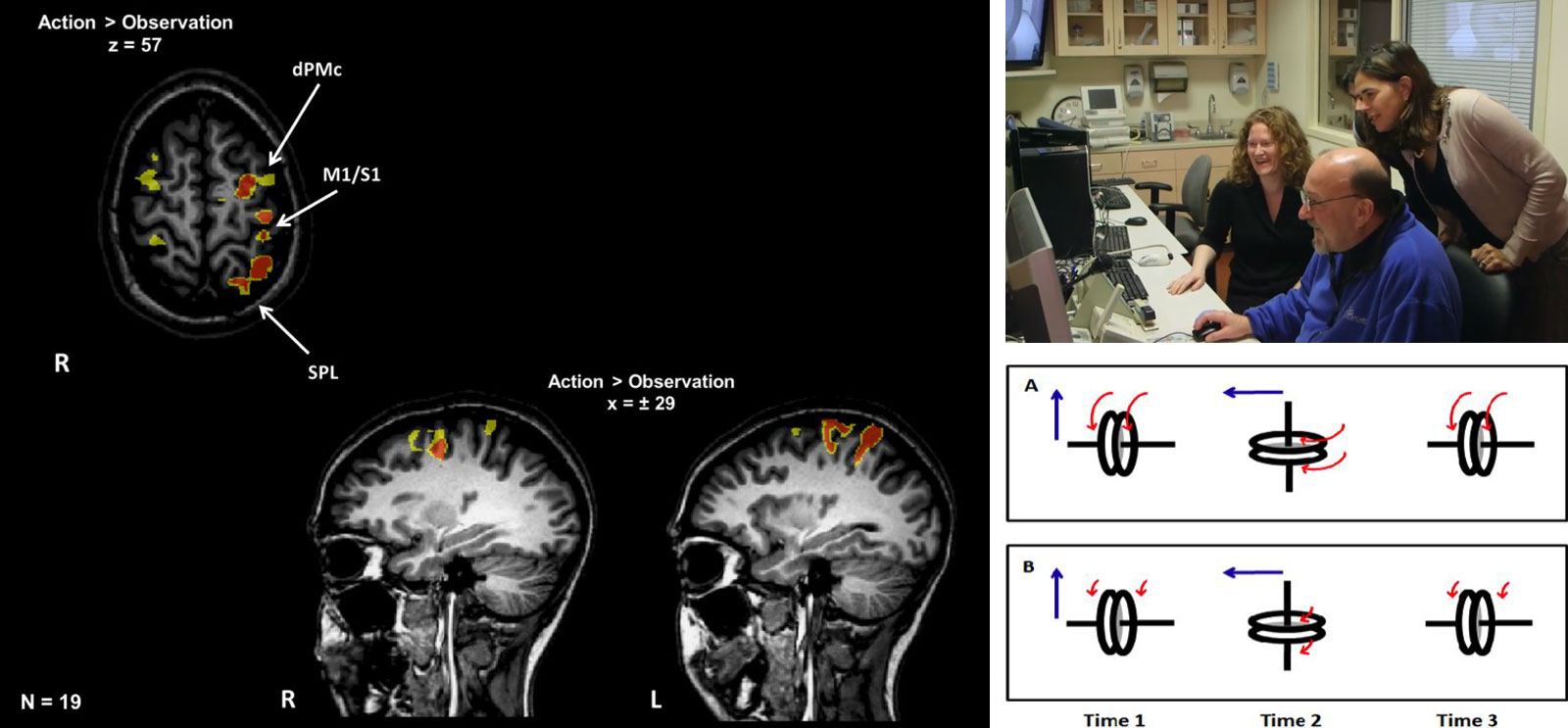
Clockwise, left to right: Student brain scans; Beilock and her colleagues find physically engaging students in the learning process helps learning; an example problem from a quiz taken by subjects who were in the functional MRI scanner. (Images courtesy Sian Beilock)
Professor Sian Beilock explains how using the body helps students better learn science.
When students learn by doing they absorb information more deeply and durably than they do from a book or a lecture. UChicago psychologist Sian Beilock and coauthors monitored undergraduates learning the concepts of angular momentum and torque. Some received a hands-on lesson: two bicycle wheels spinning independently on a single axis, which the students held and tilted from horizontal to vertical while trying to keep a laser pointer steady at a target. Other students watched but didn’t participate.
In follow-up tests, the students who’d held the spinning wheels scored higher (see graph below), and brain imaging showed the sensory and motor-related parts of their brains—important for understanding forces, angles, and trajectories—lit up as they recalled the concepts. Published online April 24 in Psychological Science and in Beilock’s How the Body Knows Its Mind (Atria Books, 2015), the study was coauthored by Carly Kontra, AM’14, PhD’14, and postdoc Daniel J. Lyons. “We need to rethink the role of the body in teaching math and science,” Beilock says. That’s perhaps especially true in an era of online classes and virtual laboratories.
